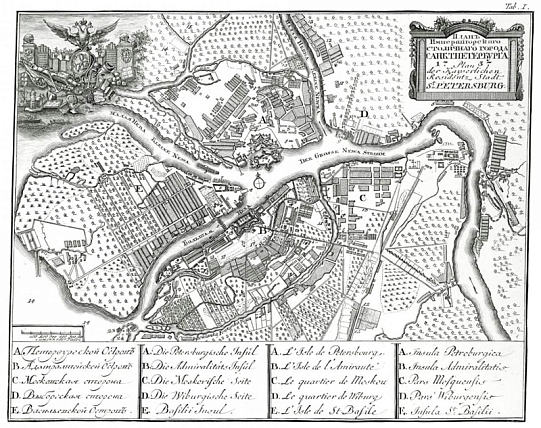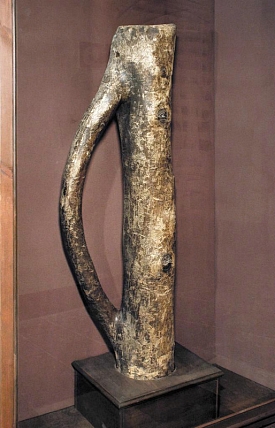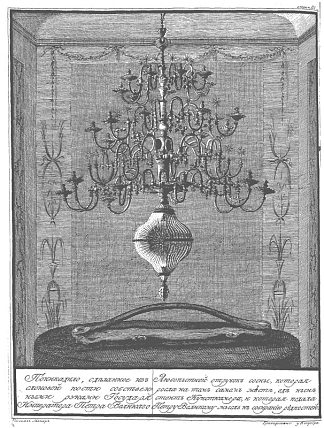- Visit Us Safely
- Opening Hours
- Getting Here
- Admission and Tickets
- Exhibitions
- Virtual 3D Tour
- Kunstkamera Mobile Guide
- History of the Kunstkamera
- The Kunstkamera: all knowledge of the world in one building
- Establishment of the Kunstkamera in 1714
- The Kunstkamera as part of the Academy of Sciences
- The Kunstkamera building
- First collections
- Peter the Great's trips to Europe
- Acquisition of collections in Europe: Frederik Ruysch, Albert Seba, Joseph-Guichard Duverney
- The Gottorp (Great Academic) globe
- Siberian expedition of Daniel Gottlieb Messerschmidt
- The Academic detachment of the second Kamchatka expedition (1733-1743)
- 1747 fire in the Kunstkamera
- Fr.-L. Jeallatscbitsch trip to China with a mission of the Academy of Sciences (1753-1756)
- Siberian collections
- Academy of Sciences' expeditions for geographical and economic exploration of Russia (1768-1774)
- Research in the Pacific
- James Cook's collections
- Early Japanese collections
- Russian circumnavigations of the world and collections of the Kunstkamera
- Kunstkamera superintendents
- Explore Collections Online
- Filming and Images Requests FAQs
Choosing the site for the Kunstkamera building
According to the city plans of architect LeBlond, the center of the new city of St. Petersburg was Vasilevsky Island. The beautiful and reachable Spit of Vasilevsky Island was designated for the city’s scientific and cultural center: the Academy of Sciences, the Kunstkamera and the library, and the Twelve Collegiums.
According to a legend, Peter I saw a “peculiar pine tree” on Vasilievsky Island. A branch grew out of the trunk and back into it like the handle of a jug. It was here that Peter ordered the building to be erected. The author of the catalog and guide to the Kunstkamera, petty librarian Osip Petrovich Beliaev dedicated a special section in his book to this pine: “A curious cut of a pine tree. In the same hall of the Kunstkamera, there is a piece of pine of two arshins and four vershoks long [1.6 meters] and six vershoks [26 cm] thick. This piece is noteworthy because it contains a bough as thick as a man’s arm, which, extending from one place and bending in a semi-circle, finally rose into another with a distance of one arshin and ten vershoks from its source. It may seem strange and incomprehensible to some people how such a bough could grow into another, having grown from one place. But if there are deformities even in the human race, why does it not happen in other works of nature; I leave it to the judgment of naturalists, to whom the mysteries of nature are more known than others. My business is to announce that this pine, if we believe the legend, grew in the place where the Kunstkamera is now and where there was a dense pine forest before. Peter the Great, passing by this place on occasion, saw this curious tree by its growth, ordered to cut it down, and said: “Where I found this curious tree, let the Kunstkamera be built there.” And in fact, this piece was the first, as a curious thing at the time, introduced into the Kunstkamera, which all who visit the museum today view with curiosity, not so much for its ugliness but for the aforementioned adventure.”
In the reprint of this book in 1800, Beliaev repeated his text and placed the image of this pine fragment among four other engravings, along with an ivory chandelier made by Peter the Great, as the earliest exhibits of the Kunstkamera. It is worth mentioning that the Hermitage, which received exhibits from the Cabinet of Peter the Great (in 1848-1849 and in 1941), also contains several fragments of the same (?) pine tree. But the part of the pine trunk, which appears on the engraving in the old guidebook, is now on display in one of the Kunstkamera’s halls devoted to the museum’s history.





